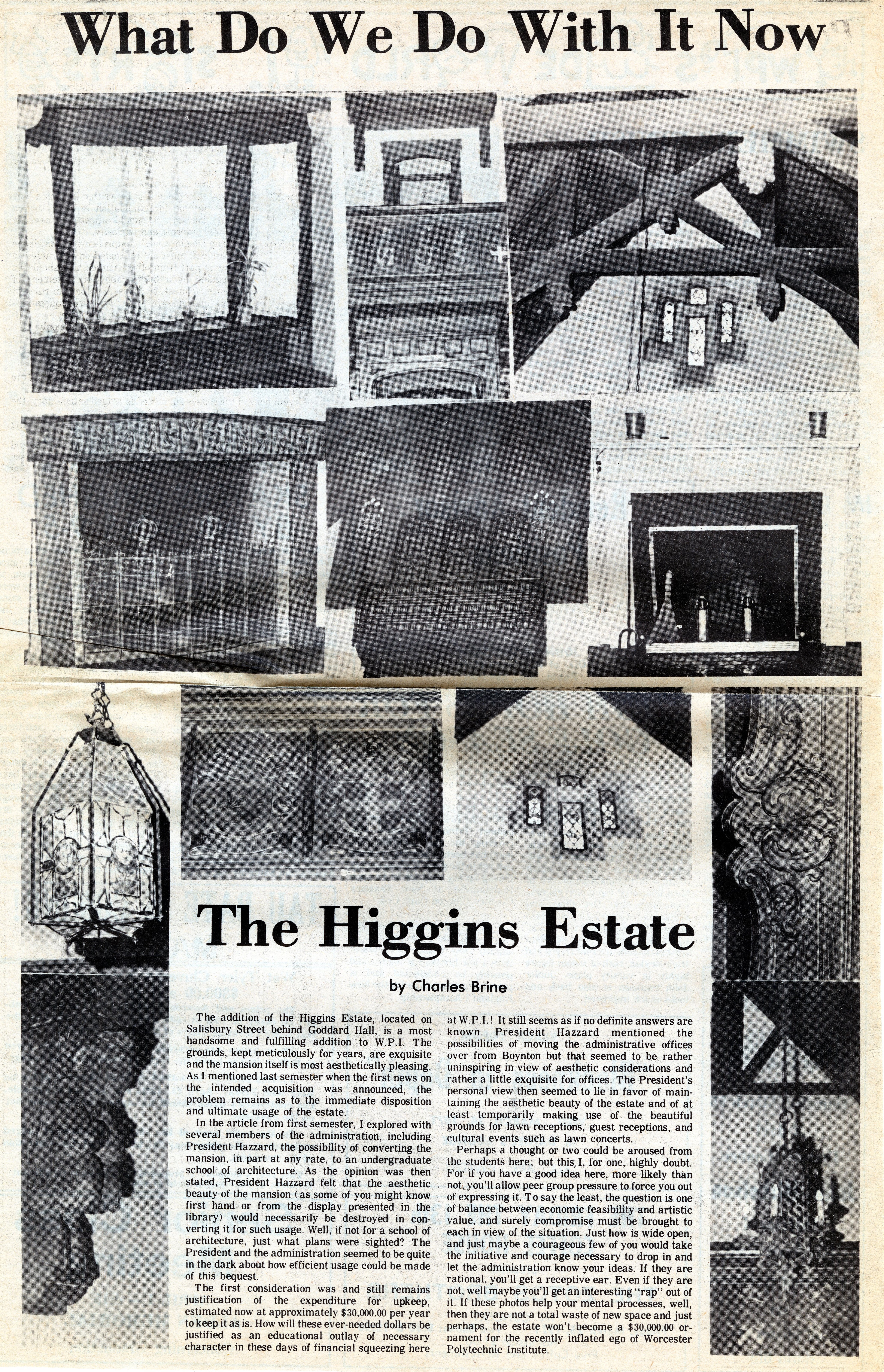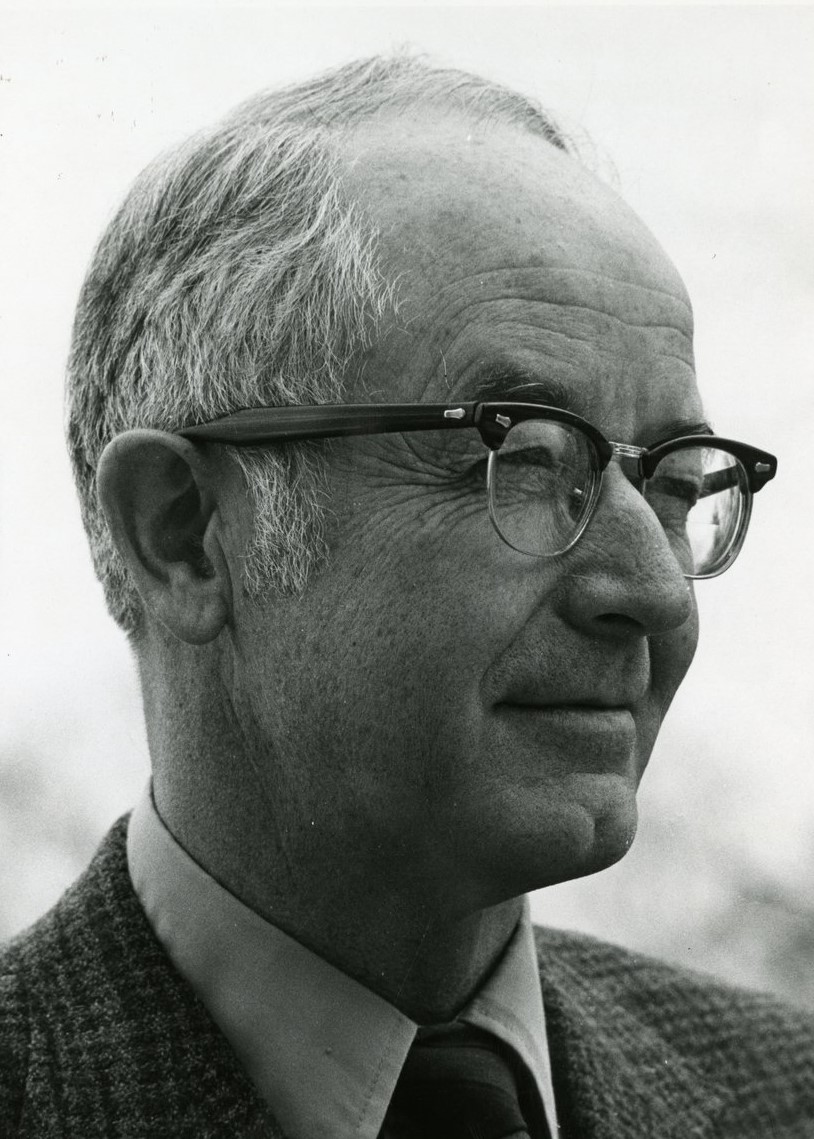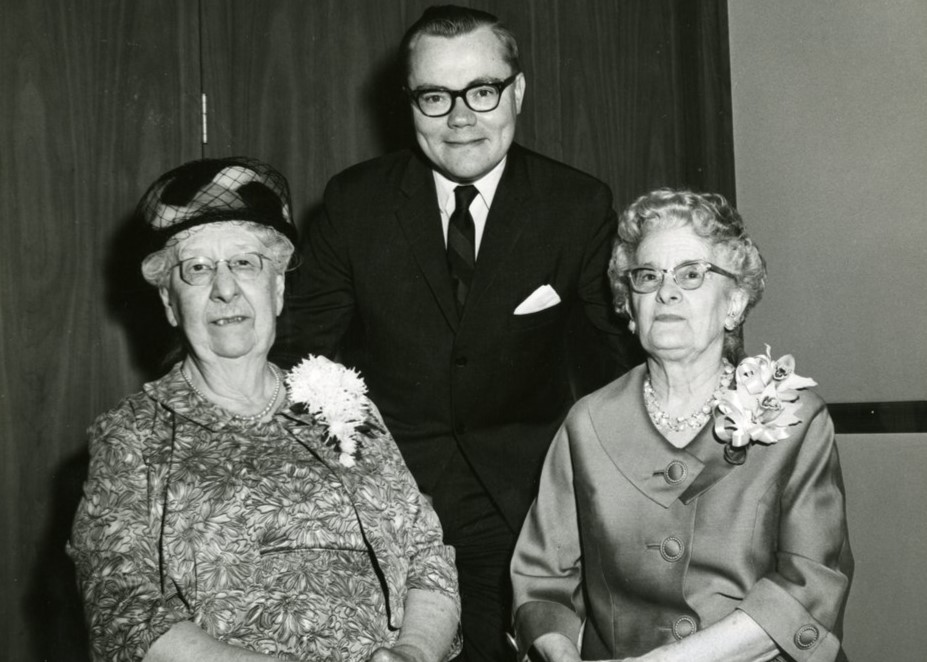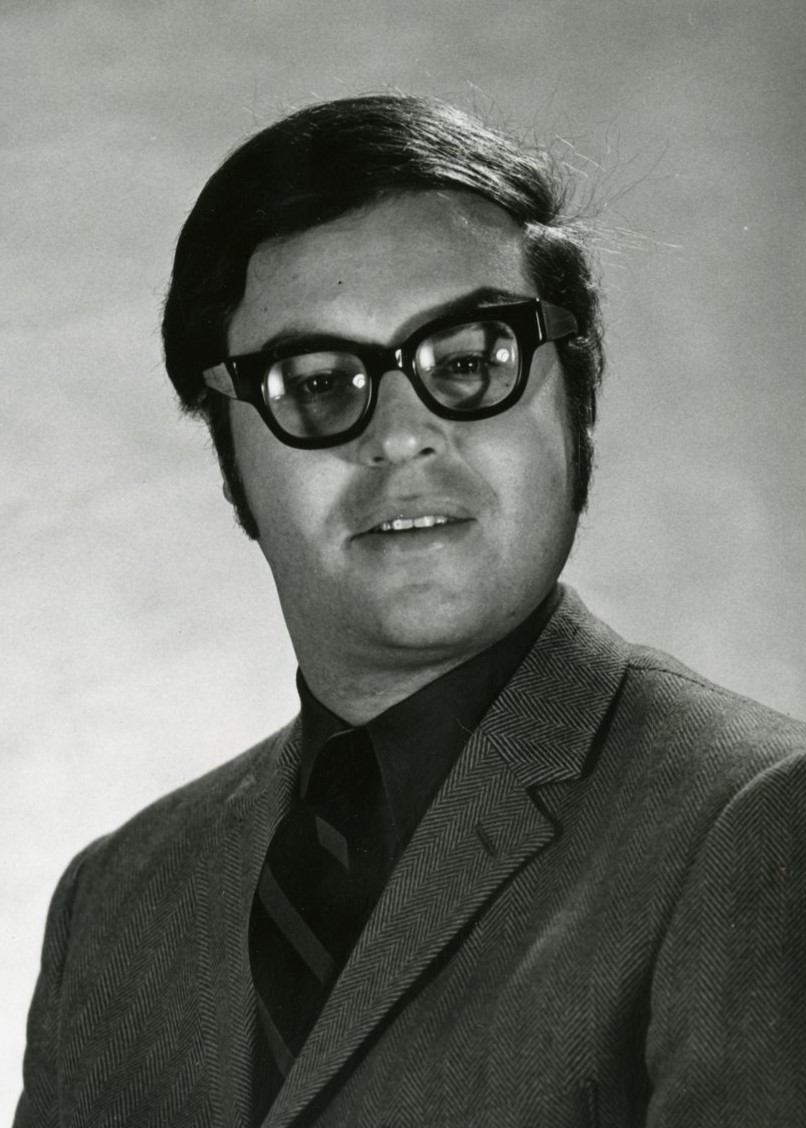Bequeathal to WPI
What To Do?
With the passing of Mary Sprague Green (Higgins) on May 12th, 1970, and the subsequent bequeathal of the estate to Worcester Polytechnic Institute, administrative conversations about what to do with the Higgins House soon became a focal point of university operations. The earliest record of correspondence among WPI’s archival collections dates back to October 23rd of that same year. In his letter to University President George W. Hazzard, faculty member and Head Librarian Albert G. Anderson, Jr. expressed the importance of giving serious consideration to the estate’s use. The first draft of a proposal that would later be tested and revised in the months and years to come was also outlined. Anderson suggested that:
- The first floor be used for special events;
- The three connecting bedrooms on the second floor be made into conference rooms, the room over the tower entrance be used for storage of audio visual equipment, and that Mrs. Higgins' private quarters serve as an apartment for the property manager; and finally,
- That "the enclosed garden off the sun room be saved for its aesthetic quality with walkways designed for students to enjoy the trees."

Campus-wide curiosity about the future of the Higgins House persisted, especially as it related to another momentous shift underway at the Institute: implementation of the WPI Plan. This innovative approach to project-based technical education and interdisciplinary learning had been developed in collaboration between President Hazzard's administration and a faculty planning committee, bringing about a new WPI landscape that now begged the question: how might the Higgins House fit into this? Various considerations were made.
First, there was considerable talk about converting it to an undergraduate school of architecture. Charles Brine, Class of 1972, reported on the matter in the October 20th, 1970 issue of WPI student newspaper, Tech News. According to his interviews, both Professor Carl H. Koontz, Head of the Civil Engineering Department, and President Hazzard were in full support of incorporating architectural studies into the new curriculum. But there were significant financial concerns. President Hazzard also expressed reserve about using the Higgins House, fearing that its costly renovation into a place of instruction would deplete the estate's intrinsic aesthetic beauty. Gardner Pierce from the Planning Office agreed.
It was later reported that President Hazzard also mentioned the possibility of moving administrative offices over from Boynton, though was rather uninspired to do so. He perceived the space as rather exquisite for such use. With these considerations in mind and in line with Albert G. Anderson, Jr.'s advisement, it seemed the future of the Higgins House would, at least temporarily, be centered around special events.
Follow the links below to read more from Brine's two Tech News articles.
October 20th, 1970: https://digital.wpi.edu/show/bz60d018d
March 23rd, 1971: https://digital.wpi.edu/show/r207ts06d
Shortly thereafter, the Higgins Board of Governors was formed. According to archived meeting minutes, some of the earliest members included (but likely were not limited to):
- Albert G. Anderson, Jr., WPI Professor and Head Librarian
- Bernard H. Brown, Vice President for Student Affairs at WPI
- Jean Fawcett Hazzard, founder of the Greater Worcester Community Foundation
- Gwen Lundin Hall, president of the WPI Faculty Wives Club
- Jennifer Weininger, Worcester Art Museum Executive and member of the WPI Faculty Wives Club
- Marion Stoddard Fletcher, a prominent Worcester local married to Paris Fletcher of the WPI Board of Trustees
It was at this stage that evaluation and assessment of the Higgins House, along with more concrete decision-making about what to do with it, really took off. But the estate's post-1970 narrative isn't limited to how its space has since been used. Also of note is how the Higgins House continues to inspire the WPI community and beyond--from student projects to out-of-town visitors. Visit each of the next two pages to learn more about the bequeathal's multifaceted impact.
More Since the Estate's Bequeathal to WPI
Back




